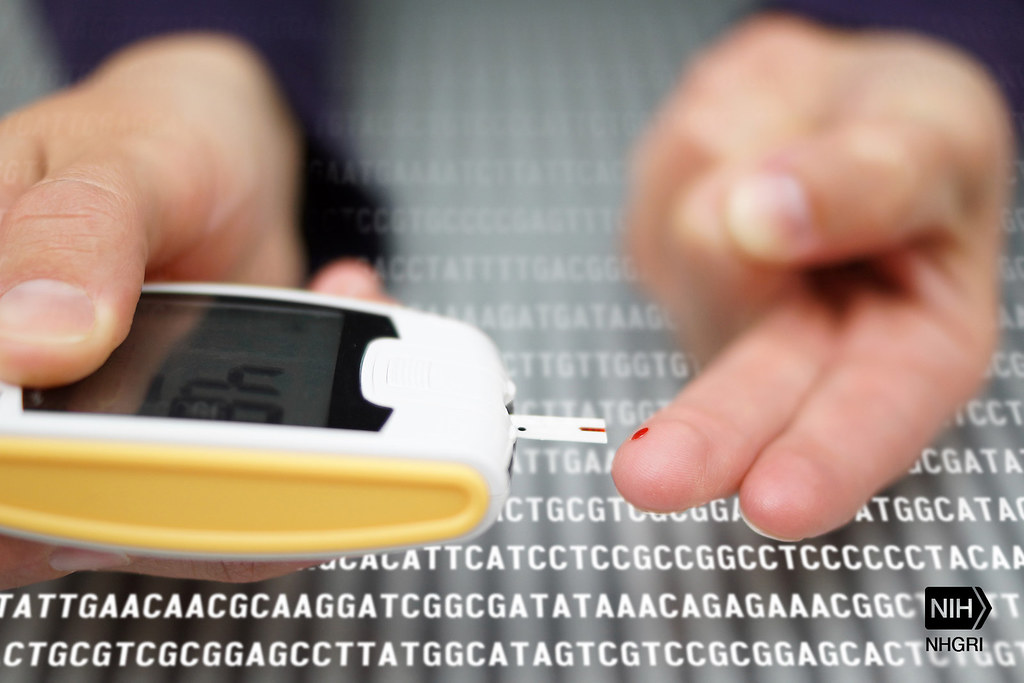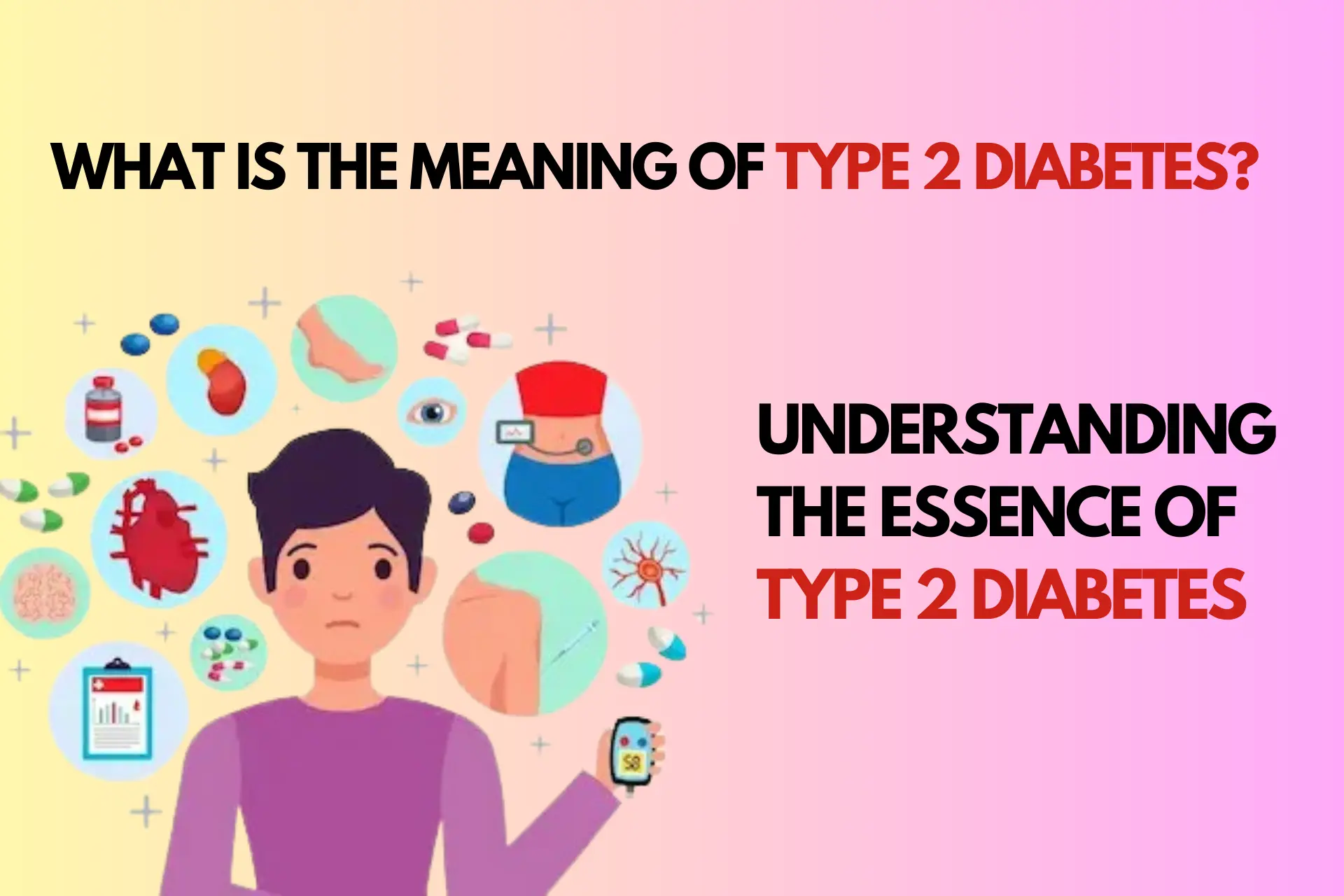Type 2 diabetes is a chronic metabolic disease characterized by high blood sugar levels due to insulin resistance or insufficient insulin production.
Type 2 diabetes is a disease that affects millions of people worldwide and has a significant impact on health and lifestyle. It’s important to understand the significance of this widespread disease, its impact and the factors that contribute to its development.
Table of Contents
What is Type 2 Diabetes?

Type 2 diabetes is a chronic metabolic disease characterized by high blood sugar levels due to insulin resistance or insufficient insulin production. Insulin, a hormone produced by the pancreas, regulates blood sugar levels by facilitating the uptake of glucose into cells for energy production.
In type 2 diabetes, cells become resistant to the action of insulin, leading to a build-up of glucose in the bloodstream. This condition can lead to various complications if left untreated, such as cardiovascular disease, nerve damage, kidney problems and vision problems.
Causes and Risk Factors of Type 2 Diabetes
Several factors contribute to the development of type 2 diabetes, including genetics, lifestyle and environmental influences. People with a family history of diabetes have a higher risk of developing the disease, which underlines the genetic predisposition aspect.
However, lifestyle also plays an important role in the onset of the disease. A sedentary lifestyle, poor eating habits, obesity and a lack of physical activity contribute significantly to insulin resistance and the development of diabetes.
How to Control Type 2 Diabetes – Must Watch the Video
Symptoms and Diagnosis of Type 2 Diabetes
Recognizing the symptoms of type 2 diabetes is crucial for timely intervention and management. Common symptoms include frequent urination, increased thirst, unexplained weight loss, fatigue, blurred vision and slow wound healing.
However, some people may remain asymptomatic for a prolonged period of time, which is why regular screening is important, especially for those with risk factors. Diagnosis usually involves blood tests to measure fasting blood glucose levels, oral glucose tolerance tests and glycated hemoglobin (HbA1c) tests.
How is type 2 diabetes diagnosed?
Type 2 diabetes is typically diagnosed through a combination of medical history, physical examination, and laboratory tests. Here’s an overview of the diagnostic process:
1. Medical History and Physical Examination: Your healthcare provider will start by asking about your symptoms, medical history, and any risk factors for diabetes, such as family history, obesity, or sedentary lifestyle. They will also perform a physical examination to check for signs of diabetes-related complications and assess your overall health.
2. Blood Tests: Blood tests are essential for diagnosing type 2 diabetes. The following tests are commonly used:
– Fasting Plasma Glucose (FPG) Test: This test measures your blood sugar level after fasting for at least 8 hours. A fasting blood sugar level of 126 milligrams per deciliter (mg/dL) or higher on two separate occasions indicates diabetes.
– Oral Glucose Tolerance Test (OGTT): During this test, you’ll drink a sugary solution, and blood sugar levels are measured before and two hours after consumption. A blood sugar level of 200 mg/dL or higher after two hours confirms diabetes.
– Glycated Hemoglobin (A1C) Test: This test provides an average blood sugar level over the past two to three months. An A1C level of 6.5% or higher indicates diabetes.
3. Additional Tests: In some cases, additional tests may be ordered to confirm the diagnosis or assess diabetes-related complications. These tests may include urine tests to check for ketones or protein, lipid profile tests to assess cholesterol levels, and kidney function tests.
Once a diagnosis of type 2 diabetes is confirmed, your healthcare provider will work with you to develop a personalized treatment plan tailored to your needs. This may include lifestyle modifications, such as dietary changes and exercise, as well as medications to help manage blood sugar levels and reduce the risk of complications.
Regular monitoring and follow-up appointments are essential to ensure that your diabetes is well-managed and to address any changes in your condition over time.
Treatment and Management of Type 2 Diabetes
Effective management of type 2 diabetes requires a multi-faceted approach that is tailored to individual needs. Lifestyle changes such as a balanced diet, regular exercise, weight control and smoking cessation form the cornerstone of treatment.
In addition, medication may be prescribed to lower blood glucose levels, improve insulin sensitivity or increase insulin production. In some cases, insulin therapy may be necessary to achieve optimal blood sugar control.
Regular blood glucose checks and medical examinations are important to monitor progress and adjust treatment if necessary.
How to Control Type 2 Diabetes – Must Watch the Video
Who is at Risk for Type 2 Diabetes?
Certain groups are more susceptible to type 2 diabetes than others. People with a family history have an increased risk due to shared genetic factors.
In addition, ethnic minorities, including South Asians, Africans and Hispanics, have a higher predisposition to diabetes.
Age also plays an important role: older adults have a higher risk of developing diabetes.
Lifestyle factors such as poor diet, lack of exercise and obesity increase the risk of type 2 diabetes and highlight the importance of adopting healthy habits to reduce this risk.
Conclusion: What is the meaning of type 2 diabetes?
In conclusion, type 2 diabetes is a complex disease that is influenced by genetic, lifestyle and environmental factors. While the onset of the disease can be influenced by a genetic predisposition, lifestyle changes are crucial for the prevention and management of the disease.
When you understand the significance of type 2 diabetes, you can make informed choices that lead to better health outcomes and a higher quality of life.
By addressing risk factors and maintaining a healthy lifestyle, it’s possible to mitigate the effects of this common disease and live well with diabetes.
Frequently Asked Questions
What is the difference between type 1 and type 2 diabetes?
The difference between type 1 and type 2 diabetes lies in the underlying causes and appearance.
Type 1 diabetes, which is often diagnosed in childhood or adolescence, is an autoimmune disease in which the body’s own immune system attacks and destroys the insulin-producing cells in the pancreas. This leads to a complete lack of insulin and requires lifelong insulin therapy.
Type 2 diabetes, on the other hand, usually occurs in adults, although it’s increasingly affecting younger people due to lifestyle factors. It’s caused by insulin resistance, where the body’s cells no longer respond as well to the effects of insulin, leading to increased blood sugar levels.
While type 1 diabetes requires immediate insulin treatment, treatment for type 2 diabetes often involves lifestyle changes in addition to medication to improve insulin sensitivity and regulate blood glucose levels.
Understanding these differences is crucial for effective diagnosis, management and treatment of both diseases.
What is type 2 diabetes real name?
Type 2 diabetes is also referred to as non-insulin-dependent diabetes mellitus (NIDDM) or adult-onset diabetes. These terms reflect the nature of the disease and emphasize the lesser dependence on insulin therapy compared to type 1 diabetes and the typical onset in adulthood.
However, the term “adult-onset diabetes” can be misleading as type 2 diabetes is increasingly being diagnosed in younger people due to increasing obesity and sedentary lifestyles.
Is type 2 diabetes serious?
Yes, type 2 diabetes is a serious condition that requires careful management to avoid complications and maintain overall health.
While it does not require immediate insulin therapy like type 1 diabetes, untreated or poorly managed type 2 diabetes can lead to various complications such as heart disease, stroke, kidney damage, nerve damage, vision problems and even limb amputation in severe cases.
Type 2 diabetes also increases the risk of other health problems such as high blood pressure, high cholesterol and obesity.
However, with lifestyle changes, medication and regular medical care, many people with type 2 diabetes can manage their condition and lead a full life.
Early diagnosis and proactive management are crucial to reduce the risk of complications associated with type 2 diabetes.
Can diabetes type 2 be cured?
Around 88 million people have prediabetes, a preliminary stage of type 2 diabetes. There is no cure for type 2 diabetes.
But it may be possible to reverse the disease to the point where you no longer need medication and your body no longer suffers from high blood sugar levels.
How to Control Type 2 Diabetes – Must Watch the Video




